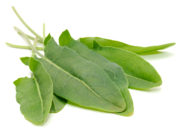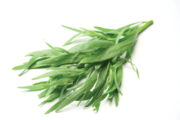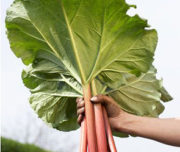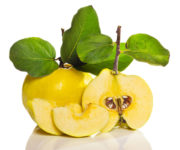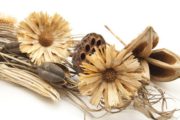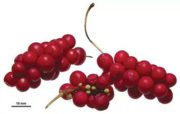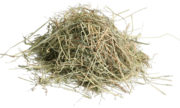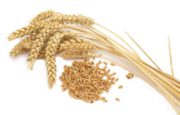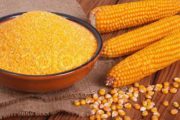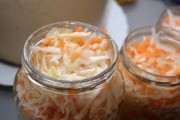Drying
Dried herbs and fennel seeds - drying at home
Fennel belongs to the umbelliferous family, and in appearance has a great resemblance to dill. But this is only at first glance. Fennel grows up to two meters in height, has a very branched aerial part, and a bulbous root. Fennel also has a different aroma from dill. Instead of the expected dill smell, you will notice a strong, sweet anise aroma.
How to properly dry sorrel at home - preparing sorrel for the winter
Sorrel is a storehouse of vitamins and nutrients. In order to have the opportunity to vitaminize our body in the winter, in the summer we need to take care of the preparation of this herb. There are many ways to do this, but today we will talk in more detail about drying sorrel. Dried herbs, properly prepared at home, retain color, taste and all the beneficial substances.
Harvesting horsetail: rules for collecting and drying - how to dry horsetail at home
Horsetail is a perennial herb that has long been used for medicinal and culinary purposes. The Latin name of this plant, Equiseti herba, translates as “horse tail.”Indeed, the appearance of horsetail resembles a horse's tail. The medicinal raw materials of this herb can be purchased at any pharmacy, but if you want to prepare medicinal raw materials yourself, then this article will give you a lot of useful information about the rules for collecting and drying this plant at home.
Dried tarragon (tarragon) - prepared at home
Tarragon, tarragon, tarragon wormwood are all names of the same plant, which is widely used in both cooking and medicine. Subtle notes of anise make it possible to use tarragon to flavor almost any dish or drink.
Wormwood: how to dry grass at home - collecting and storing wormwood for the winter
Wormwood is a perennial plant that has quite a few varieties, but only wormwood (Artemísia absinthium) has miraculous medicinal properties. This plant is widely used in folk medicine and cooking.
Drying the herbarium at home: preparing dried flowers and leaves for the herbarium
Not only children's applications can be made from dried leaves and flowers. A modern trend in handmade crafts – “scrapbooking” – reveals how to make a beautiful greeting card with your own hands, or decorate a photo album using dry plants. With proper skill, you can learn how to dry voluminous flowers to create collages and bouquets.
Dried rhubarb at home: drying rhubarb petioles and roots for the winter
In Germany or England you will certainly be treated to a signature dish of “rabarber”. You will be surprised, but this is ordinary rhubarb, which is very revered by Europeans as a dietary, but very healthy product.
Dried quince - drying at home
Quince has a tart, sweet and sour taste, but the pulp itself is so hard that it is practically not consumed fresh. Although quince can be stored for up to 5 months without any problems, it is better to immediately process it and make it suitable for consumption in order to avoid rotting and get rid of possible pests that have settled in the fruit.
Dried flowers: methods of drying flowers - how to dry dried flowers at home
Dried flowers allow you to preserve memories of the summer or a memorable event for the celebration of which they were given. Dried flowers in decorative compositions look most advantageous, as they retain their shape, appearance and sometimes even aroma. We will talk in more detail about how to properly dry flowers at home in this article.
Echinacea purpurea: how to collect and dry medicinal raw materials - drying echinacea at home
Echinacea is a medicinal plant that has powerful immunomodulatory properties. Thanks to this, our body is able to cope much faster with diseases such as flu, colds and ARVI. Medicines based on efinacea can be found in any pharmacy, but raw materials prepared with your own hands can give you much more benefits, and, moreover, will not hurt your pocket.To learn how to properly collect and dry Echinacea purpurea at home, read this article.
How to collect and dry red clover at home - harvesting clover for the winter
Clover is a grass known to everyone since childhood. Many of us have tasted clover nectar by sucking it from the pink tubular flowers. Today, many people perceive it as an ordinary meadow grass or even as a weed, but in fact, clover is not only an excellent honey plant and food for pets, but also a medicinal plant that can fight many ailments. Read about how to properly prepare clover grass for the winter at home in this article.
How to dry boletus mushrooms for the winter - all ways to dry mushrooms at home
Boletus mushrooms are aromatic and very tasty mushrooms that mainly grow in deciduous and mixed forests. The favorite place of growth is under birch trees, which is where the name of these mushrooms comes from. Boletus mushrooms grow in groups of several, so harvesting a large harvest is not difficult. What to do with mushrooms after a “quiet hunt”? Some can be cooked immediately, and the rest can be frozen or dried. Today we will talk about how to properly dry mushrooms at home.
Dried cherries in an electric dryer
Dried cherries make an exquisite delicacy that can be eaten plain, added to baked goods, or made into compotes. You won’t confuse the delicate aroma of cherries with anything else, and it’s worth spending your time on.
How to dry Chinese lemongrass at home: dry the berries and leaves
Chinese lemongrass grows not only in China, but the Chinese told about its healing properties, and it is they who need to be thanked for this wonderful plant against a hundred diseases. In lemongrass, almost all parts of the plant are medicinal and useful, and not only berries, but also leaves and young shoots can be harvested for the winter.
How to dry citrus zest
Many recipes, especially desserts, call for the addition of citrus zest. The zest itself does not provide any special taste, and is used as a flavoring agent and as a decoration for dessert.
How to dry arugula
No Italian pasta sauce is complete without arugula. Arugula, despite its unpretentious appearance and unpretentiousness in cultivation, has a mustard-nutty taste and peppery aroma. And the smaller and younger the leaves, the brighter the taste.
How to make hay for the winter - drying grass for pets
Pets such as rabbits and chinchillas eat hay. Hay briquettes can be bought at any pet store, but isn't it better to prepare the grass yourself? The quality of the product and its nutritional value will be much higher, provided that certain rules for mowing and drying the grass are followed.
Grain: various drying methods - how to dry grain at home
Many people grow various grain crops on their plots, such as wheat, rye, and barley. The resulting grains are subsequently germinated and eaten. Of course, the harvest volumes are far from production volumes, but products grown independently also need to be able to be processed correctly. In order for grain to be stored for a long time, it must be thoroughly dried. We’ll talk about how to properly dry grain at home in this article.
Salt dough: methods for drying products - how to dry salt dough for crafts
An alternative to plasticine is salt dough, which you can prepare yourself at home. Crafts made from this material can delight the eye for years. But this can only be achieved if certain rules for drying dough are observed. There are several drying methods, and each of them has its own subtleties. Today we will examine in detail the topic of how to properly dry crafts made from salt dough.
Dried corn kernels at home
The ancient Aztecs, who lived in the territory of modern Mexico 12 thousand years ago, began cultivating corn. It’s hard to imagine, but it is their merit that we now have many varieties of corn and a huge number of recipes for cooking corn dishes.


